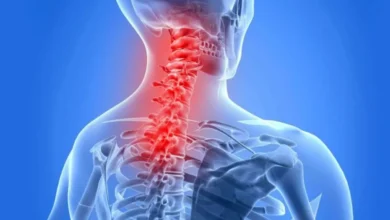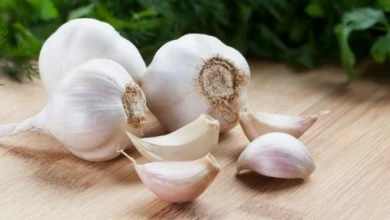The Connection Between Diet and High Blood Pressure
High Blood Pressure

High blood pressure, also known as hypertension, is a common health condition that affects a significant portion of the population worldwide. It is often referred to as the “silent killer” because it can go unnoticed for years, gradually damaging the body’s organs. While various factors contribute to the development of high blood pressure, one crucial element that plays a significant role is our diet. In this article, we will explore the connection between diet and high blood pressure, highlighting the impact of food choices on blood pressure levels.
Understanding High Blood Pressure
Before delving into the relationship between diet and high blood pressure, let’s briefly understand what high blood pressure entails. Blood pressure refers to the force exerted by blood against the walls of the arteries as it circulates through the body. When this force exceeds the normal range consistently, it leads to high blood pressure.
The Role of Diet in High Blood Pressure
Research has shown that the foods we consume directly affect our blood pressure levels. Certain dietary components can either contribute to hypertension or help maintain healthy blood pressure levels. Let’s explore some key aspects of diet that influence high blood pressure.
1. Sodium Intake
Excessive consumption of sodium, commonly found in table salt and processed foods, has been strongly linked to high blood pressure. Sodium retains water in the body, leading to increased blood volume and, subsequently, higher blood pressure. To reduce sodium intake, it is advisable to limit the consumption of processed and packaged foods and opt for fresh, unprocessed alternatives.
2. Potassium-Rich Foods
Potassium is a mineral that plays a crucial role in regulating blood pressure. Consuming foods rich in potassium helps balance the effects of sodium and relaxes blood vessels, promoting lower blood pressure. Some excellent sources of potassium include bananas, oranges, spinach, avocados, and sweet potatoes.
3. Healthy Fats
Replacing unhealthy saturated and trans fats with healthier options like monounsaturated and polyunsaturated fats can have a positive impact on blood pressure. Foods such as olive oil, avocados, nuts, and fatty fish like salmon and mackerel are rich in these beneficial fats and can help lower blood pressure levels.
4. Magnesium-Rich Foods
Magnesium deficiency has been associated with high blood pressure. Including magnesium-rich foods in your diet, such as leafy greens, nuts, seeds, and whole grains, can help regulate blood pressure levels. Additionally, magnesium supports overall cardiovascular health.
5. DASH Diet
The Dietary Approaches to Stop Hypertension (DASH) diet is specifically designed to lower blood pressure. This eating plan emphasizes fruits, vegetables, whole grains, lean proteins, and low-fat dairy products. By following the DASH diet, individuals can significantly reduce their blood pressure and improve overall cardiovascular health.
Symptoms and Ayurvedic Treatment for High Blood Pressure
High blood pressure, also known as hypertension, is a prevalent health condition that affects a significant number of individuals worldwide. If left unmanaged, it can lead to serious health complications. Ayurveda, the ancient Indian system of medicine, offers holistic approaches to treat and manage high blood pressure. In this article, we will explore the symptoms of high blood pressure and discuss various Ayurvedic treatments that can help alleviate the condition.
Symptoms of High Blood Pressure

High blood pressure is often referred to as the “silent killer” because it may not present any noticeable symptoms in its early stages. However, as the condition progresses, individuals may experience the following symptoms:
- Headaches: Persistent headaches, especially in the morning, can be an indicator of high blood pressure.
- Fatigue and Dizziness: Feeling tired and experiencing dizziness or lightheadedness may be signs of elevated blood pressure levels.
- Shortness of Breath: Difficulty in breathing or shortness of breath, even during minimal physical activity, can be associated with high blood pressure.
- Chest Pain: Some individuals with high blood pressure may experience chest pain, which can be an indication of an underlying cardiovascular issue.
- Vision Problems: Blurred vision or experiencing changes in vision may be related to high blood pressure affecting the blood vessels in the eyes.
Ayurvedic Treatment for High Blood Pressure
Ayurveda focuses on achieving balance and harmony within the body to promote overall well-being. When it comes to managing high blood pressure, Ayurvedic treatments aim to address the root causes of the condition and restore balance. Here are some Ayurvedic approaches commonly used:
1.Lifestyle Modifications:
Ayurveda emphasizes the importance of adopting a healthy lifestyle. This includes incorporating a balanced diet, regular exercise, stress management techniques (such as yoga and meditation), and maintaining a proper sleep schedule.
2. Herbal Remedies:
Ayurvedic herbs like Arjuna (Terminalia arjuna), Ashwagandha (Withania somnifera), and Brahmi (Bacopa monnieri) are known for their potential benefits in managing high blood pressure. However, it is essential to consult with an Ayurvedic practitioner before starting any herbal treatment.
3.Panchakarma:
Panchakarma is a detoxification and rejuvenation therapy used in Ayurveda. It aims to eliminate toxins from the body and restore balance. Specific Panchakarma techniques, such as Abhyanga (therapeutic oil massage), Shirodhara (continuous oil flow on the forehead), and Nasya (nasal administration of herbal oils), may be beneficial for individuals with high blood pressure.
4. Stress Management:
Chronic stress is known to contribute to high blood pressure. Ayurveda recommends various stress management techniques, including meditation, deep breathing exercises, and practicing mindfulness, to help reduce stress levels and promote relaxation.
Conclusion
Maintaining a healthy diet plays a pivotal role in managing high blood pressure. By reducing sodium intake, increasing potassium consumption, incorporating healthy fats, ensuring an adequate magnesium intake, and following the DASH diet, individuals can take significant steps towards preventing and managing high blood pressure. It is essential to consult with a healthcare professional or a registered dietitian to develop a personalized dietary plan that suits individual needs. By making informed food choices, one can positively impact their blood.
If you have any queries related to medical health, consult Subhash Goyal or his team members on this given no +91 99150 72372, +91 99150 99575, +918283060000



